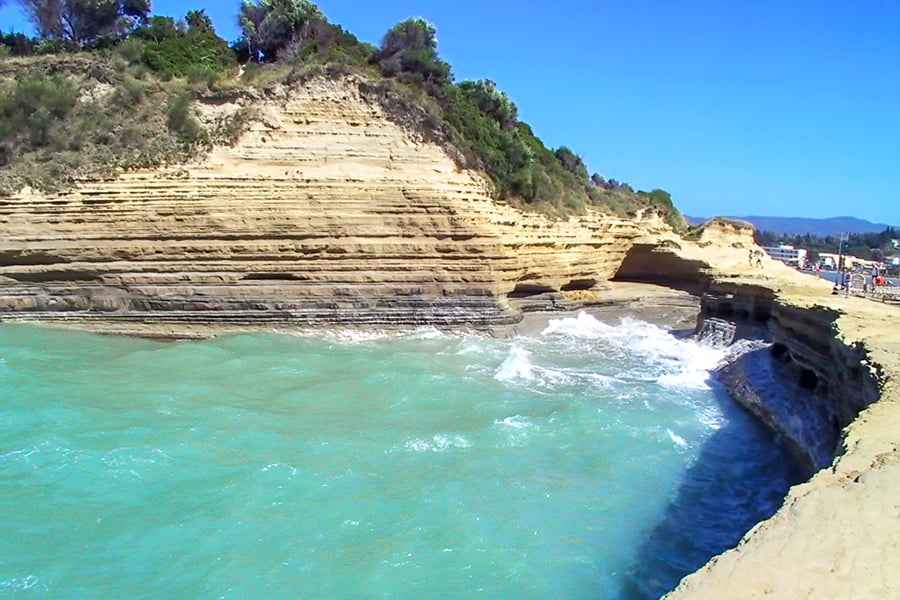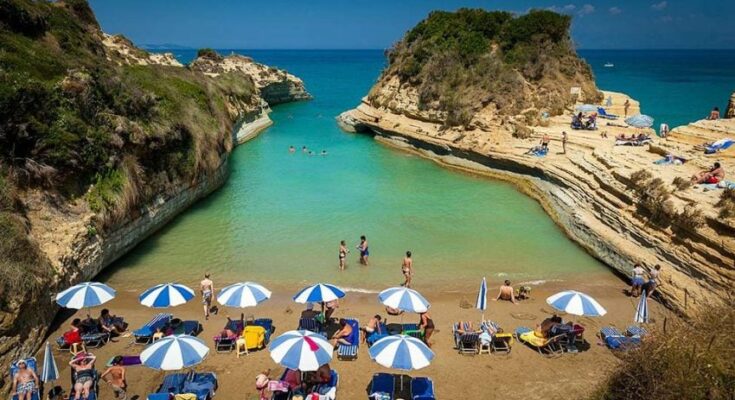One of the most beautiful and well-known beaches on the island of Corfu, the picturesque Canal d’Amour or “Channel of Love,” is known throughout Europe and worldwide as the beach for true lovers who want to stay together forever.
Located in the north of the island near Sidari, about 32 kilometers (20 miles) from the main town and on the westernmost tip of the island’s northern shore, it is remarkable for its sculpted sandstone rocks which rise up on either side, forming a natural fjord-like canal.
The History of Corfu Island
Corfu’s history can be traced back all the way to Ancient Greece and Greek mythology. Corfu is known as Kerkyra in Greek, a name derived from the nymph Korkira. In Greek mythology, Poseidon, the Greek god of the sea, falls in love with Korkira, kidnapping her and hiding her away on the island that now bears her name.

According to local legend, couples who swim the length of the canal will stay in love forever while those who swim to its furthest tip will find the love of their life. Many visitors, however, prefer to simply toss a coin into its waters and make a wish for true love.
Corfu’s Channel of Love water is said to offer healing properties
A unique spot favored by tourists, celebrities, and many film crews over the years, according to the locals the Canal d’Amour also boasts detoxifying and healing properties.
This is attributed to the rich deposits of clay that form in the sea, as the rocks are weathered by the wind and saltwater, creating small lagoons and exquisite caves.

Many visitors enjoy sitting on the rocks, scooping up handfuls of clay, and smoothing it on their bodies and hair for a natural mud bath.
The area has been inhabited since ancient times with traces of a Neolithic settlement and earlier Mesolithic settlements found during excavations in Sidari.
Each year the beach, which has been popular since the 1960s, receives a Blue Flag for excellence. It is also a good spot for diving and water sports.



